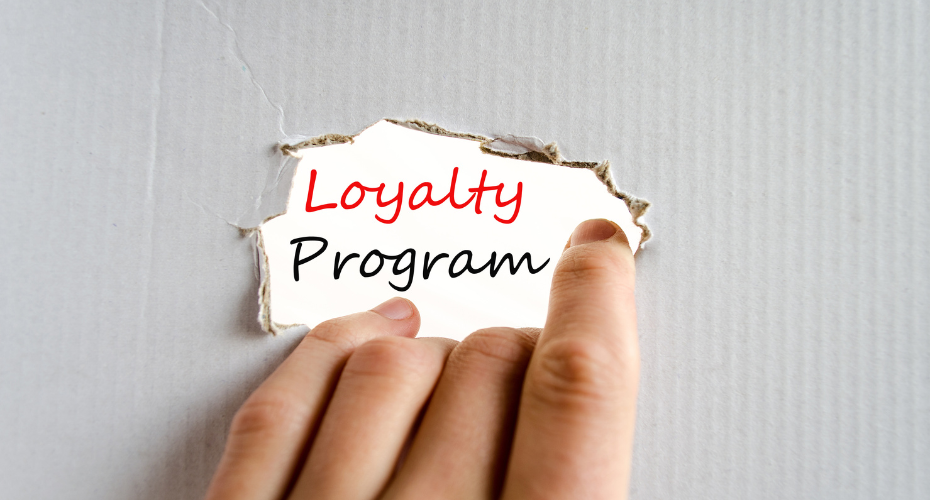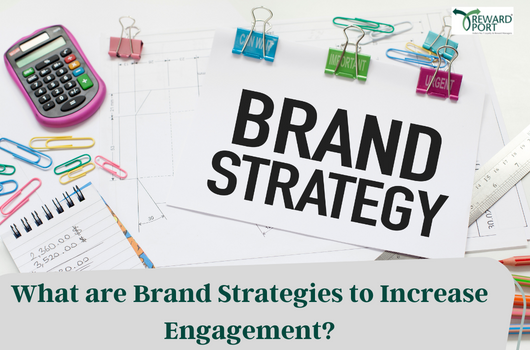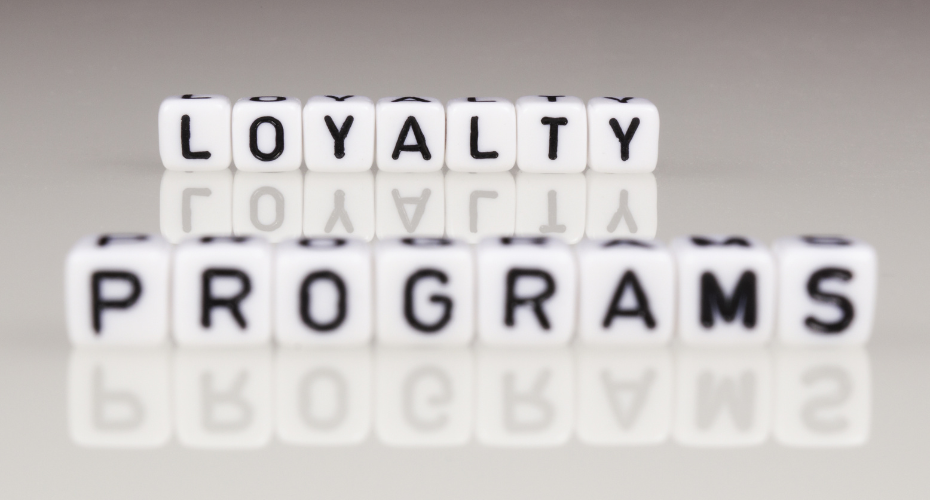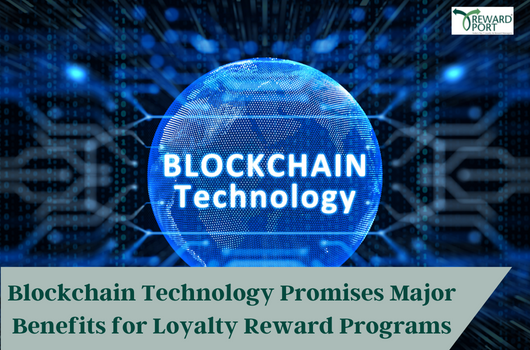
7 Reasons to Have a Continuous Loyalty Program for Your Business

The most loyal customers of a brand are also its most profitable ones. Every business is building loyalty programs to turn its customers into brand loyalists. However, many of them misapply these reward programs. Common discount coupons and short-term loyalty campaigns are highly in trend to attract more and more customers.
Such an approach can bring one-time customers and encourage them to try your products/services. But they don’t add much value to your business. With a loyalty program, your focus should be more on retaining customers. The longer your relationship with your customers, the lower your need to spend on them.
What is a Loyalty Program?

A loyalty program is a well-structured strategy to encourage customers to stay loyal to a brand. Customers are incentivised to spend on a business. It makes them feel valued by the brand and motivates them to spend more on it. The more they spend, the more incentives they receive.
The incentives can be monetary or non-monetary. You just need to ensure that your loyalty program excites your target audience. Along with encouraging your existing customers to stay loyal, these programs increase your brand awareness and attract new customers.
Why a Continuous Loyalty Program?
Loyalty programs, if planned and implemented well, can be very effective in increasing the Customer Lifetime Value (CLV). Studies suggest that most customers consider themselves loyal to a brand only after spending at least five times on it.
With short-term discount offers or one-time reward programs, you can catch the attention of new customers. But there is no guarantee that these new customers will purchase your products again. They may only make a one-time purchase to avail of the discounts.
It is essential to keep your customers loyal for a long time to maximise profits with a loyalty program. Here are some advantages of having a continuous loyalty program for your business:

1. Build shared Values
Continuous and focused Loyalty Programs are valuable for your business and the customers. About 64% of consumers are loyal to the brands because of shared values. You can create community-based loyalty programs where people from different backgrounds feel like a single unit.
Sephora’s Beauty Insider Program is a good example here. Along with offering a wide range of gift options to redeem loyalty points, the platform creates an online community. All beauty enthusiasts can share their looks and ideas and learn from each other.
2. Customers Remain Invested in the Value
Loyalty Programs are not always about offering monetary rewards to your customers. You can encourage them to stay loyal even by making them feel valued. When you value your customers’ feedback, suggestions, and thoughts, they are more likely to stick to your brand.
The best way to retain your customers is to make them invest value in your business. You can ask your customers for feedback on your latest launch via social media or a short survey. Take their responsibilities seriously and work on them. Also, let your customers know that you value their feedback.
A great example of this is the ‘Spin the Wheel’ program by a gold investment app. Under this, you get a chance to spin the wheel every time you invest in Gold. You earn some money after spinning the wheel and after accumulating a certain amount, you can invest this money to buy more gold. RewardPort is India’s leading rewards company and can help you run relevant loyalty programs for your business.
3. Increase Trust
Studies on e-commerce platforms suggest that around 94% of overall purchases are of products with 4–5-star reviews. It shows how important it is for a business to win customers’ trust. You can get good reviews only if your existing customers are happy and trust your brand.
When you have a continuous customer loyalty program that rewards your customers for every purchase, your customers feel appreciated for their purchase. As a result, they trust your business and become loyal.
4. Differentiate Your Brand from Competitors
A unique and continuous loyalty program sets your brand apart from its competitors. While others offer one-time discounts or short-term loyalty programs to attract new customers, you can focus on retaining your customers by following the concept for more value to more profitable customers.
Such programs can help you beat the competition in the market. Even if some other brand is offering similar products at less expensive prices, customers are more likely to prefer your brand if it has a better loyalty program.
5. Builds Sentimental Value
With a unique loyalty program that builds shared values, you can make your customers feel emotionally connected to your brand. Customers that have sentimental values attached to a brand are more likely to stay loyal for a longer period. When you gain the trust of your customers, they automatically start feeling an emotional connection with your company.
6. Increase Referral Business
Loyalty programs also encourage word-of-mouth marketing of your business. With great rewards/incentives, you make your customers feel good about your brand. These happy customers become your brand advocates and refer your brand to their friends. It is a great way to expand your referral business without any additional cost.
7. Lower Loyalty Costs
When you have a continuous loyalty program for your business, your major focus is on retaining your existing customers. Customers become more loyal with every additional year of relationship and these loyal customers are less costly to serve. Customer acquisition is much more expensive than customer retention.
However, that doesn’t mean you are not going to attract more audience. The trust and loyalty of your existing customers towards your brand play a significant role in gaining new customers.
Types of Continuous Loyalty Programs

Loyalty Programs can be of different types. Different brands build different reward programs that align with their customers’ interests and business requirements. However, these programs are generally based on one of the following concepts:
1. Points-Based Programs:
These programs offer some sort of rewards/loyalty points on every purchase that a customer makes. After accumulating a certain number of points, these can be redeemed to get free-gifts, coupons, or vouchers. Sometimes these points can also be used to get a discount on the next purchase.
2. Cashback Programs
Under these loyalty programs, customers get cashback on every purchase. This cashback can be used against future purchases. For example, credit card companies offer cashback to their customers,’ which is automatically adjusted against their billing amount.
3. Subscription-Based Programs
Subscription-based programs require a fee to be paid from the customer’s end to earn rewards or incentives. Once a customer buys a subscription, he/she is more likely to stay loyal for a longer period.
4. Spend-Based Programs
These programs offer rewards/gifts/incentives to the customers after achieving a particular spend slab within a pre-specified time. This encourages customers to spend more in a shorter period.
5. Referral Programs
Referral Programs offer rewards, cashback, or other sorts of benefits to existing customers for every successful referral. Even the referred friend gets the benefit along with the existing customer.
How To Create a Loyalty Program for Your Business?

Creating a loyalty program for your business should not be a random process. It requires you to take the following steps carefully:
1. Know Your Audience:
To achieve your goals with a loyalty program, it is extremely important to understand your customers. Try to identify your most loyal customers and their interests.
You can do this using customer data, surveys, social media platforms, or by taking customer interviews. Make sure that your customers love what you are offering under your loyalty program.
2. Prepare a Plan
Decide what type of loyalty program you are going to build for your business. A points-based reward program is preferred by most businesses, but it might not be the best for your business as well. RewardPort can help you build a loyalty program that aligns with your business needs.
3. Set Different Tiers
To make your loyalty program different from the competitors, you can add different tiers to it. The more loyal a customer is, the higher benefits he/she gets. This encourages your customers to spend more to get promoted upper tiers and receive higher incentives.
4. Add Personalization
Adding a personal touch to your loyalty program helps you establish an emotional connection with your customers. You can do this by encouraging your customers to spend on the categories they are more interested in.
Apart from these steps, you must focus on building shared values and making your customers invest time or effort in your brand. Moreover, regular communication with your customers also plays an important role in customer loyalty.
Build A Consumer-Centric Loyalty Program
It is important to listen to your customers to provide them with the best experience and encourage loyalty among them. RewardPort helps you build a loyalty program that suits your business needs and provides the best customer satisfaction.
Being a top loyalty rewards company, RewardPort makes sure that you achieve your business objectives faster with the most suitable loyalty rewards programs. RewardPort equips you with the latest and most inexpensive rewards based on your audience. You can monitor and modify the campaigns as per their performance and customer feedback.
Frequently Asked Questions: –
How do I enrol in a loyalty program?
As a brand, you must build a loyalty program for your customers. Reward and loyalty solutions companies like RewardPort can help you create the best program for your business.
How can a loyalty program benefit a company’s marketing efforts?
A well-structured loyalty program can reduce the marketing costs of a company to a great extent. Customers engaged with a loyalty program are more likely to respond to your advertisements and become brand advocates. It encourages word-of-mouth marketing, and your business reaches more audiences with less effort.
How can a company measure the success of its loyalty program marketing efforts?
Here are the top metrics to measure the success of a loyalty program:
- Customer Enrolment Rate in the loyalty program
- Participation or Engagement Rate
- Rate of repeat purchases
- Average spends per customer vs the return on investment
- Customer lifetime value

How to Identify and Define goals for Brand Loyalty?
Brand objectives can enhance departmental collaboration, offer precise metrics for tracking branding development, and enhance how the public views your business. Setting branding goals can be difficult, but as firms learn to use their marketing strategy, target markets, and existing data, it can become simpler.
What are Brand Objectives?
The quantifiable objectives of a certain brand are its branding or brand objectives. Branding, which describes how the public perceives a corporation, may include brand awareness, engagement, market shares, image, or recognition. The goal of branding is to change one or more of these aspects of how the public perceives an organization.
Branding goals give businesses detailed strategies for enhancing their branding.
Branding can happen more wisely if businesses highlight their products in a proper way such as scratch cards, loyalty cards and coupons or scratch and win exciting gifts to their customers.
Companies that develop and put into practice certain branding objectives can:
- Facilitate collaboration between multiple personnel, departments, and managers
- Give a brand a defined purpose
- Boost their standing in the industry
- Set explicit performance goals for team members
- Gain more market share, brand evangelists, or audience engagement
- Increase revenue and client retention
- Encourage staff to reflect more to enhance or improve future branding goals
How to develop brand goals?
Identify your target market
To reach, engage, and impress potential and future customers, you can set branding objectives with the aid of your target audience knowledge. Plan how to make your brand appealing to all of the different demographics, behaviors, and characteristics that your target audience may exhibit. Knowing how different segments of your target audience view your brand and how you want them to see it is a crucial component of this. You should introduce your interesting products such as online scratch card coupons for movies, vouchers that can be used to avail discounts on products and online scratch cards to receive surprises. For instance, you can develop different branding goals for retaining current devoted customers than you would for luring in potential new customers.
Connect your goals to your marketing plan
Your marketing team probably already has a broad goal in place, such as boosting sales, elevating brand recognition, or reaching out to more prospective customers. Your larger marketing goals can be broken down into smaller, more specific actions using branding objectives. For instance, you may direct some of your brand objectives toward developing a loyalty rewards programme if one of your marketing strategies included increasing customer loyalty.
Set quantifiable objectives
Brand goals should be clear, actionable, and quantifiable. It is simpler for departments to monitor and assess the success of their branding initiatives when they have measurable, actionable goals. Measurable goals can improve collaboration and efficiency among teams or individuals working on a branding goal. To measure brand objectives, you might take into account employing marketing metrics and key performance indicators (KPIs) like lead generation, conversion rates, or sales growth to see the growth and interest people have taken into online scratch cards and coupons.
Realistic expectations should not overwhelm aspirations
A corporation with ambitions often finds it simpler to create goals since they are clear on what they want their organization to accomplish and stand for in the long run. The goals of your organization must be balanced with reasonable expectations. For instance, if your business wants to be known as a global brand but is only based in one nation, an achievable branding goal may be to get more recognition in three more nations over the course of the upcoming quarter.
Measure and assess outcomes
Once your branding goals have been established, keep an eye on how well your business is doing in achieving them. It’s critical to evaluate your success throughout and after the allocated timeframe because your brand objectives may change. Encourage your marketing team to make your customers discover the relevance of online scratch cards, loyalty cards or online scratch card coupons. In light of changing data, marketing strategies, and target markets, you may regularly update your brand objectives by working together.
Examples of branding goals
The specific brand goals of a firm may change depending on elements like target market, business size and kind, and marketing techniques. Here are some examples of brand objectives, organized by typical marketing objectives and tactics, that may be useful to your company:
Bring the audience’s awareness up
Your company’s branding goals may include the following if you wish to increase your reach with potential customers:
- Offering a free trial, a discounted price, or a free product
- Double your social media content’s share rates (30%)
- Looking for opportunity to guest blog
- 15% increase in click-through rates
Promote fresh goods or services
If your business has developed a fresh good or service that’s prepared for sale, take into account these brand objective examples:
- Creating digital advertisements tailored for your new service or product
- Running a unique campaign
- An increase of 40% in conversion rates
- Providing discounts or contest entries to customers who publicly review the new good or service
Boost your internet presence
The following examples of brand objectives may be useful when creating your own for businesses aiming to improve their online presence so that customers can avail scratch and win online, online scratch cards, loyalty cards etc.
- Launching a website or updating an existing one
- Gaining five points in your domain authority (DA)
- Establishing contact with reporters looking for subject-matter expertise
- 10% more people subscribing to emails
Boost your brand equity
Here are some examples of brand objectives to help your firm increase its assessed value:
- Using a tool for competition analysis
- Obtaining input from customers via surveys or reviews
- 5% Increase in quality assurance ratings
Increase audience interest
Audience interest can be gained only when you bring them what they want into your exciting online scratch cards and coupons, and the types of gifts they receive in scratch and win. These sample brand objectives may be useful for businesses looking to increase audience engagement:
- Enhancing the website’s user experience for mobile devices
- 100 New email addresses being collected in a quarter
- Making inquiries or surveys on social media
Boost your profit margins
Following are some examples of brand objectives that may be useful if your marketing team wishes to increase the overall profitability of your company:
- Develop a plan to increase how valuable items or services are seen
- Based on research, offer exclusive offers to certain segments of your audience
- Increase sales of your top-selling items by 15 %
Conclusion
Brand Loyalty comes with the quality of your goods and services but to pave its way to success is equally important when it comes to choosing the right platform and the right marketeers are here to assist you at RewardPort. We carry out loyalty campaigns specifically for your brand while paying attention to every detail with affordable price.

What is brand engagement? strategies to improve brand engagement in 2023
A perfect brand image and brand engagement strategy are the two most important factors in your branding strategy. But what exactly is brand engagement, and how you can improve brand engagement through marketing?
Brand engagement refers to the process of developing a closer relationship with your customers. The thing is the type of loyalty you inspire will result in an audience that is committed to any form of marketing with your brand.
Why is Brand Engagement important?
Developing a strong emotional connection with customers has several important benefits. Let’s take a closer look at them.
- Customers Engagement
This is the initial and most obvious advantage of increasing brand engagement. A well-thought-out strategy, combined with a set of effective techniques, will allow you to interact with users on social media, messengers, and through email campaigns. As a result, you’ll be able to create a fantastic community around your brand.
- Allows Businesses to Increase Customer Retention & Loyalty
You will undoubtedly be rewarded if you attend to your customer’s needs and preferences, solicit their feedback on your brand, and strive to provide a positive user experience. Customers will reward you with their loyalty. As you know, selling to an existing client is much easier than selling to a newly acquired lead.
- Increases Sales
This advantage stems from the preceding point. The level of customer engagement has a direct impact on sales. Users buy solutions to their problems, not brands’ products, so the goal is to persuade a client that working with this brand will provide them with the benefits they seek.
- It Makes it Easier to Improve Products & Services
If a company can establish trusting relationships with its customers, it will not only increase sales but also gather valuable feedback. Customers are delighted to assist their favorite brands in growing and improving. As a marketer, you can conduct customer interviews through various channels and techniques. Surveys, polls, quizzes, feedback forms, and so on. Customers who provide feedback may be rewarded with a discount or other offers.
- Increasing the Size of the Cart and Sales
Showing that your brand can meet consumer needs increases the likelihood that they will engage with you and spend. According to research, more than 60% of customers believe brands should care more about them, and they are willing to spend more if they feel valued.
- Increasing Your Competitive Advantage
Why do customers prefer your brand over competitors? It’s not just because they know about your brand, but also because of your reputation. When your company has a reputation for excellent customer service, it has a competitive advantage over other companies that may have a well-known name but no associated reputation for strong customer relationships or brand values.
Strategies to Improve Brand Engagement in 2023
Your only limitation in terms of Internet marketing opportunities is your imagination. Today’s wide range of channels, content formats, and tools allows every brand to find the best fit for its target audience. In this section, we’ll share tried-and-true methods for increasing brand engagement.
- Hold Raffles, Contests, & Polls
These content formats enable businesses to increase engagement, attract new customers, and increase sales. People enjoy both interactive content and freebies.
Giveaways are especially popular among young businesses because they help to raise brand awareness and attract new customers. In exchange for an incentive, encourage users to join your mailing list or share your brand with their friends. It could be a special deal, a discount, a free trial, or anything else of value.
Contests operate similarly. Instagram polls are popular because they help brands increase customer engagement in posts and stories. Users are more likely to interact in this manner because they read stories first. Furthermore, it makes customers feel important and allows brands to identify their most active customers.
- Event Planning
Event marketing is an effective method of brand promotion. Events assist brands in acquiring new leads, increasing brand recognition and awareness, educating leads, and increasing engagement. All of this is made possible by both online and offline events such as webinars, seminars, conferences, thought-leadership events, workshops, and so on.
You can promote your upcoming event using a variety of marketing tools. Send an email with an event invitation, create a landing page, and promote events on social media.
- Personalize Customers Communications Across Channels
Personalization is essential for developing long-term customer relationships. Customers will not be loyal to your brand if you know nothing about them and treat everyone the same way.
Use personalization and segmentation to approach each user individually. The first tool enables marketers to send targeted messages to customers based on their personal information. This information may include a person’s name, gender, country, birth date, address, and so on.
Brands can use segmentation to divide their audience into segments and target each segment with highly targeted offers. Segments can be created based on demographics, interests, preferences, buyer journey stage, purchasing behaviour, and so on.
You can provide a highly relevant offer to a customer at the right time by using segmentation. If a user adds an item to their shopping cart but does not purchase it, they will be added to a corresponding mailing list and will receive an abandoned cart email.
To increase sales, provide them with a discount or free shipping. Triggered emails can be sent automatically in response to predefined events such as cart abandonment.
- Promote User-Generated Content (UGC)
User-generated content is created by your brand’s audience. It is extremely effective because it promotes your company, increases brand awareness and engagement, and reaches new potential customers better than any other type of content created by the company. People have faith in one another.
UGC can take many forms, including photo and video reviews, comments, and participation in contests and giveaways. Brands frequently allow their audience to generate new ideas and award a prize to the most creative one. Analyze both your audience and the most promising channels to make this strategy work. Hashtags on Instagram and Facebook will aid in the virality of your content.
Design Brand Engagement Strategies Which Stand Out
Brand engagement is important for all companies, not just household names, in all market sectors. The methods and metrics discussed here can assist businesses in successfully providing the goods and services that their customers value. Experts at RewardPort can help you devise unique strategies based on your brand persona and customer psyche.
Creating a connection with customers, soliciting feedback, and being responsive to their needs will result in repeat business. Additionally, word-of-mouth promotion and customer loyalty result from the ultimate customer experience. So, set your objectives, choose your path, and let the experts drive you to your destination.

Unique gifting ideas for Christmas and new year to keep your customers happy
What better way to show your appreciation for your customers than to send them a customer appreciation gift on special occasions? Your competitors may try to win customers back with old “thank you” emails. You, on the other hand, can make a lasting impression.
The problem with gifts is deciding what to send. You cannot choose something that is too expensive or something that may be considered worthless. When choosing gift ideas, you must tread a fine line between cost and utility.
How to Market Using Gifts?
While the obvious goal of a customer appreciation gift is to show you care, it also serves another purpose: it promotes your online store. Customers should feel happy and appreciated, but it would also be nice if they recommended your store to their friends.
There are a few things to consider when using customer appreciation gifts as a marketing tactic.
Discounts vs. gifts
Using discounts and offers to increase sales is common practice in e-commerce. The question is how a discount compares to a gift in terms of marketing impact.
To answer this question, you must consider two factors:
- How frequently you offer discounts: The perceived value of a discount depends on how frequently you offer it. Customers may be uninterested in another discount, no matter how large, if you have frequent sales and offers.
- Value and terms of the discount: A steep discount with liberal terms may end up costing you more than a gift. Customers may be turned off if the discount is too small and the terms are too restrictive.
Surprisingly, consumer psychology research shows that people prefer to get more rather than spend less. A gift may have a higher perceived value because it provides more.
Of course, this only applies if you tell your customers you’re giving them a gift.
Explicit vs. Hidden Gifts
Should you inform customers about the gift or keep it a surprise for them?
Each approach has advantages and disadvantages. Informing customers ahead of time may persuade them to make a purchase, especially if they perceive the gift as a “deal.” Simultaneously, it deprives you of the customer delight that comes with a surprise gift.
What approach you take will be determined by your goals for the gift. Choose a surprise gift if your goal is to delight customers, build loyalty, and increase word of mouth (including social media).
If you want to use gifts as an incentive to buy more, tell customers about it right away.
Gifting to a Subset of Customers vs. Gifting to all Customers
Another conundrum is deciding who to gift – some customers or all of them?
The obvious disadvantage of gifting to everyone is the cost. You may not reap many benefits from gifting people who are inactive on social media or are unlikely to recommend you to their friends.
At the same time, only gifting a few customers may make them feel special at the expense of other customers. Customer B may be perplexed as to why Customer A received a gift while he did not. This can lead to resentment for your brand, which is the opposite of the purpose of gifting.
A better strategy would be to target your top 20% of customers. These are either customers who use social media or customers who fit your ideal customer profile. Because you want more of these customers, targeting them can produce better results.
Increase the Impact of Your Gifts
There are a few things you should keep in mind to get the most out of your customer appreciation gifts:
Customers are more likely to buy when there is a “mystery” involved in the purchase. Keeping the gift hidden can help in this situation.
Customers who receive something unexpected and free are more likely to shop again. As a result, it may be worthwhile to lose money upfront on a sale by making a gift. You can compensate by making additional purchases.
Giving away a freebie generates immediate word of mouth, especially if the gift is the customer’s first interaction with your brand. Thus, in addition to your top customers, you can target first-time buyers when giving away gifts to make a good first impression.
Concentrate on customers who are active on social media or have a history of sharing your products. Encourage them to post pictures of their gifts on their favorite social network.
Instead of giving a gift, consider donating to charity on behalf of the customer. According to research, charitable donations outperform practical gifts, especially when the original purchase was frivolous.
These are just a few ideas for making the most of your gifts. Your next task will be to choose the appropriate gift. We’ll go over some gift-selection guidelines below.
How to Choose Customer Appreciation Presents?
A customer appreciation gift is typically something physical, useful, and in some way related to your business. Its goal is straightforward: to thank customers for their patronage. The quality of the gift will determine whether it elicits a “wow” or an “eh.”
When choosing a customer appreciation gift, you must adhere to several guidelines:
◾ It should have perceived value:
Above all, the gift should have perceived value. Even if it is inexpensive, it must meet a customer’s need or appear valuable to the customer.
◾ It should be beneficial:
A good gift usually serves some practical purpose. Souvenirs and trinkets that serve no purpose are quickly forgotten. Every time the customer uses a useful gift, it will remind them of your company.
◾ It should be simple to store and transport:
No customer wants to deal with an unwanted gift that takes up too much space in their home. You also don’t want to deal with the hassle of transporting a large gift. Always opt for something small and convenient to transport.
◾ It should be long-lasting and durable:
A perishable or easily destroyed gift will quickly lose its value. Avoid fragile items or anything that could spoil in a few weeks.
◾ It should be business-related:
An ideal gift is business-related in some way so that it reminds the customer of you. If you own a fashion store, choose a fashion accessory rather than a macroeconomics book.
Conclusion
Keep your customer personas in mind when choosing gifts. Consider: what would someone in this demographic enjoy? A cheap gift card to a discount store, for example, would not work if your target customers make more than $200,000 per year and live in a wealthy suburb.
Make demographics the focal point of your gift-selection process, and you’ll never go wrong.
We at RewardPort offer you an amazing number of rewards that your customers can redeem across multiple categories. MCOG (My Choice of Gift) is simple for your young users to use and tends to make a profit and redeeming points a breeze.

How to choose the right loyalty partner for your brand?
Successful businesses have loyal customers and repeat orders.
Loyalty programs assist businesses to strengthen their ties with their customers and a good loyalty partner can help you do just that.
Loyalty marketing has evolved significantly in recent years. Many brands have recognized the value of transforming cookie-cutter offers and programmatic rewards into personalized, engaging experiences. In other words, humanizing the brand-consumer engagement.
The recent digital push has made it mandatory for businesses to develop omnichannel engagement programs. However, marketers need to engage expert agencies for faster adoption of custom loyalty programs.
However, choosing the right loyalty partner for your brand’s personality and consumer segments is critical for the success of not only the program but also the business.
What exactly is a Loyalty Partner?

A loyalty program is a complex and massive undertaking for which most businesses lack the necessary resources, experience, and expertise. This is where a loyal partner can help. A loyalty partner will:
- Create and implement your loyalty strategy
- Provide the necessary resources and technological requirements
- Lead the data collection through the loyalty program
- Redemption procedures that work in tandem with the company’s CRM
Loyalty partner is a catch-all term. Depending on your marketing budget, business objectives, range of business, audience type, and campaign size, you could work with a loyalty agency or a loyalty platform partner.
Why Is Choosing the Right Loyalty Partner the Most Important Step?
Your decision will have a significant impact on some of the most critical aspects of your business. The following are the most important aspects that it will have an impact on.
1. Impact on Campaign Success
The direct impact of your partner selection will have an impact on the success of your campaign. An experienced loyalty platform partner, such as RewardPort, will design the program with your brand guidelines, business goals, and target group psyche in mind. A lack of research, experience, and expertise can hurt the performance of your loyalty strategy and the brand image.
2. Customer Experience
The primary goal of a loyalty program is to significantly improve the customer experience. A strong brand and customer relationship are built on a positive customer experience. A loyalty program that is tailored to a specific demographic will have a high level of engagement. A program that fails to appeal to the audience, on the other hand, will have a negative impact.
3. Customer Retention Rate
An experienced loyalty partner understands how to retain customers through an engaging loyalty program. Consistent engagement and profitable value exchange between brand and customers can successfully retain customers over time. An expert partner designs the program for long-term engagement and significantly increase customer lifetime value.
4. The Effect on Customer Referral Rate
Customers who are satisfied and happy have a positive influence on their network of friends and family. A profitable and engaging loyalty program combined with a referral program can attract more customers and increase the acquisition rate. This is a win-win situation for both the brand and its customers.
5. Influence on Brand Value
Customer experience, perceived brand image, and customer satisfaction all have an impact on the monetary value of the overall brand, also referred to as brand value. A simple yet effective loyalty program will increase customer satisfaction, retention rate, brand image, and revenue, whereas a poorly designed and executed program significantly reduce brand value.
What Should you Look for in a Loyalty Platform Partner?

Hiring your ideal loyalty partner needs a little due diligence after the brand introspection. You want to be certain that the partner can forward your loyalty strategy and help you implement the brand vision.
For a structured process have a checklist for the following factors while assessing the partners:
1. Strategic Collaboration
Look for a mutually beneficial partnership. A solution provider may have limited responsibilities, whereas a strategic partner can have shared responsibilities. The loyalty partner usually has a broader responsibility for the success of the loyalty program ensuring better KPI achievement.
Loyalty providers must act as partners, not just solutions. Loyalty programs are industry and business model specific. This means that the provider’s team should be able to leverage their expertise to create a successful program that is tailored to your needs.
Marketer-friendly solutions are easy to launch, manage, and troubleshoot independently, but may require additional guidance. A dedicated Customer Success Manager (CSM) provides
ongoing support and data-driven strategies to ensure that your business goals are met as your brand evolves.
2. Program customization and agility
The relationship between brands and customers is constantly evolving, and your loyalty program should reflect this. Choose a loyalty provider that offers customizable, module-based solutions. You can keep your programs agile and flexible without sacrificing startup speed.
Marketer-friendly solutions make it easy to design, launch, and optimize programs as your business grows. No code, web development, or website redesign required. Test strategies or launch new campaigns quickly and effectively.
3. Provider of Complete Solutions
Similarly, you require a loyalty partner who takes a comprehensive approach. A loyalty program has an impact on many aspects of a business, from marketing to management. As a result, a loyalty partner who takes on full responsibility for a loyalty program comes highly recommended. This will not only relieve you of the burden, but will also ensure smooth execution, increased efficiency, and better results.
4. Capabilities for Data Mining
Loyalty programs are the most effective way to collect zero and first-party data. Look for a loyalty partner with the technological capabilities to efficiently mine data from your loyalty programs. Your loyalty partner must also be able to integrate CRM data with loyalty program data. This will provide you with comprehensive and rich customer data, which will significantly improve your marketing and business strategies.
5. Solutions Provided
Loyalty programs have progressed significantly. Loyalty strategies must now include dynamic elements in order to better gauge the pulse of the audience and provide quantifiable deliverables. Personalization, individualized experiences, gamification, and other features offered by loyalty partners are more suitable for modern-day businesses. Technology is constantly evolving, and you require a partner who keeps up with the times and routinely uses technology to amplify your loyalty program
6. Prior Experience
Experience brings with it a level of finesse and expertise that is unrivalled. Look for partners with extensive experience. The success of a loyalty program is dependent on several nuances that an experienced partner will never overlook or undervalue. Agencies or platforms that have executed several programs over the years understand the nitty-gritty and the importance of the undertaking and can provide solutions that will ensure a higher ROI.
The appropriate loyalty partner will not only further your brand’s vision for consumer retention, but also add value to the brand itself. The retention campaign results can reveal a lot about the product and service usage patterns and where it can absolutely delight your consumers. Thus, helping the brand with insights about product or service and communication improvements.

What are Brand Strategies to Increase Engagement?
Brand engagement refers to customer loyalty and attachment to brands. Consumer engagement, which increases business sales, is at the heart of marketing strategy.
Customers who are highly engaged are more likely to make larger purchases. Furthermore, highly engaged customers are more likely to share information about your company and products through their social networks. Their devotion generates word-of-mouth advertising, which is a surefire winner for any company looking to increase sales.
Brands make the right decision when they prioritize value creation over revenue generation. As a result, customers are completely satisfied because they are getting the best deal possible.
Brand Engagement vs. Brand Awareness

Both phrases are part of the foundational ideas of brand marketing. Brand engagement strategy suggests that any brand should pursue a number of goals in order to be successful. They consist of brand equity, advocacy, brand engagement, brand loyalty, brand identity, and brand image.
When developing your marketing strategy, brand recognition comes first. It calls for marketing initiatives designed to increase brand recognition. The ability of prospective customers to distinguish your brand from rivals and remember your items is essential. In other words, your brand should be the first to occur to people’s minds when they have a need for a product they haven’t used before. To do this, brands heavily invest in advertising on a variety of platforms.
Increase brand engagement as soon as you’ve raised brand recognition. In order to make a purchase, they must be intrigued by your business. So, allow them to communicate with you through a variety of methods and make them know that you value their feedback. More sales will result from a stronger relationship with your audience and more brand engagement.
How to Increase Customer Engagement?
You’ve probably noticed that major brands and businesses encourage their customers to leave product reviews on their official social media pages.
Customers can always share their opinions and experiences through testimonials. This is a critical component of a successful customer interaction strategy. If your services are good, encouraging consumer feedback will help your brand’s positive reputation spread organically and interpersonally.

Practice the Four-I Strategy
- Involvement: Make your audience an active participant in your campaign to increase engagement with your brand. To help clients feel more connected to your brand, your business should promote various benefits and rewards programs.
- Influence: People look for advice from celebrities and influencers they respect and want to imitate, especially in the social media age. Work with the people who your potential consumers most admire to sway them.
- Interaction: Two must dance the tango! In this case, the adage is entirely appropriate. Brands and customers must interact for any business to succeed. Additionally, contact will increase customer and brand trust.
- Intimacy: Engage in direct communication with, and outreach to, customers at various levels and via a variety of channels. By doing this, you’ll be able to understand what your customers are thinking and meet their wants.
Consider the Value of Mobile Apps
The online brand marketing strategies that businesses use have drastically changed as a result of the rise of smartphones.
Top businesses and brands not only have expert websites but also have mobile applications that are easy to use.
Customers may use these applications to get a bird’s-eye perspective of all the goods they can buy, give reviews, rate the goods, and ask inquiries. There are many of applications that also compare pricing for a certain goods.
Post high-quality material on social media for digital marketing
More international firms are using social media and search engine optimization to strengthen their bonds with current customers. You should first create top-notch interactive content if you want to encourage your users or consumers. Strong content will spread more often on social media and among friends, enhancing the reputation of your brand.
Why engagement matters?
There are more channels for communicating with customers than ever before. This means that businesses have several options for attracting and retaining customers. It also implies that competitors have access to the same opportunities.
Brands must actively work to connect and interact with consumers at every opportunity in order to increase consumer engagement. Be consistent with all of your consumer engagement strategies. Create great end-to-end customer experiences from the first interaction all the way through the brand journey by crafting messages that are consistent with the brand and relevant to the target audience.
Provide customers with a consistent and great experience, and you’ll gain their involvement, loyalty, and trust.

5 Best Loyalty Schemes for this Diwali

Looking for supreme choices of loyalty programs for your customers, then you have arrived at the right platform. At Reward Port, we assist the businesses to offer the best loyalty programs which can sway away the customers and aid in strengthening the bond of trust between your brand and the customers. Festivities are a great time to express gratitude to your customers and acknowledge their contribution in the consistent growth of your brands in the form of rewards.
So, this Diwali delight your customers with any one of these five best loyalty programs :
1. Point based scheme
The quintessential type of the loyalty program, this scheme offers value points for every purchase executed by the customer. These points can be redeemed later for the subsequent transactions. Higher the points, higher the redeemable amount of money. The introduction of this program is definitely bound to foster the initial trust and worth of your brand in the minds of especially the new customers.
2. Tier scheme
The tier scheme is the excellent approach to reward the long term loyal customers of your brand. Upgradation to the higher tier provides greater incentives on product purchases. It requires the customers to accrue points through multiple purchases over a period of time and evidently, greater number of points shifts them to higher rewards tier.
3. Sweepstakes
Businesses can partner with our loyalty rewards platform and relax as we offer convenient and hassle free sweepstakes program for your customers. Sweepstakes is a straight-forward program for the customers to enter with a minimal to zero fees and there is every probability to take home a grand bumper prize along with them. Various other prizes offered to runner ups are also high- priced.
4. Partnership Program
Businesses can build partnership with various other firms such as those offering food products, beauty products or even various services based firms to delight the customers to the next level. Studies have shown that the flexibility in the choices available under the umbrella of a loyalty program is the main reason the customers find a loyalty program attractive. With the points accumulated, customer can log into their account and redeem their points by shopping from a plethora of products available.
5. Gamified Loyalty Program
If the businesses desire to acquire an edge over their competitors, it is indeed achievable by the creative gamification of a loyalty program that can be offered as a spellbinding reward program to the customers, for instance the Spin and Win Reward loyalty program.
It is essential to emphasize that any of the loyalty programs extended to your customers should be in a comprehensible format with terms and conditions mentioned, to ensure greater effectiveness of the program.

Blockchain Technology Promises Major Benefits for Loyalty Reward Programs
What the internet did for communications, blockchain will do for trusted transactions.
So what is Blockchain?
Picture a spreadsheet that is duplicated thousands of times across a network of computers. Then imagine that this network is designed to regularly update this spreadsheet, and you have a basic understanding of the blockchain. The blockchain database isn’t stored in any single location, meaning the records it keeps are truly public and easily verifiable. No centralized version of this information exists for a hacker to corrupt. Hosted by millions of computers simultaneously, its data is accessible to anyone on the internet.
Blockchain enable two entities that do not know each other to agree that something is true without the need of a third party. As opposed to writing entries into a single sheet of paper, a blockchain is a distributed database that takes a number of inputs and places them into a block. Each block is then ‘chained’ to the next block using a cryptographic signature. This allows blockchains to be used as a ledger which is accessible by anyone with permission to do so.
Introducing Blockchain as a customer loyalty solution
Loyalty programs are often considered as one of the most efficient ways for businesses to retain customers. The Deloitte Center for Financial Services (DCFS), in a recent report, claims blockchain technology can improve customer loyalty and reward programs. Its chief benefits are in allowing companies to join their rewards program in ways not previously thought possible and it would simplify reward programs by linking multiple programs that consumers are already a part of.
Blockchain implementations of customer reward programs will give businesses a secure and verifiable record of transactions, particularly for their rewards programs. This technology’s record at solving problems is proven; blockchain in what made Bitcoin the first digital currency to finally solve the ‘double spending’ problem, in which customers can sometimes spend a single unit of digital currency multiple times. Although modern customer reward systems now have built-in protections against this problem, its impossibility within a blockchain deployment makes blockchain an attractive collaboration tool.
Reward points will be transferrable across participating businesses. Retailers and other businesses could take advantage of common markets to enhance the usefulness of their reward programs to their customers. Travelers, for example, could book a hotel and receive automatic discounts at their nearby restaurants through their rewards app.
Customers will benefit from the linkage between different retailers’ reward programs as it will reduce the number of total memberships that customers already have to keep a track of.
Blockchain brings benefits
Blockchain has the potential to streamline administration and execution for program providers because of real-time transparency. A blockchain based loyalty program should reduce system management cost with smart contracts that report secure, tracked, transparent transactions to legacy systems, reducing costs associated with errors and fraud.
The blockchain can connect a largely disconnected realm of loyalty rewards programs, eliminate friction, reduce costs, bring redemption and credit to near real time, and improve business relationships. Blockchain has proved it can deploy through digital wallets and social media and can interact with existing loyalty rewards platforms via smart contracts. An online protocol, programmed building blocks and smart contracts give blockchain technology the ability to act without intermediaries.
A widespread diffusion of decentralized architectures would create an immutable and time-stamp distributed database entry of every single transaction ever made, making each transaction and its record easily traceable, but also rendering them irreversible, preventing double spending, fraud, abuse, and any other type of manipulation of the transactions.
Mobile phones are part of the solution:
The only way to move forward with a blockchain- powered rewards system is through mobile applications. Blockchain will introduce tight security into the mobile app payments, thus making more people embrace the technology. The blockchain technology calls for a full-proof ledger which will log all your transaction details, and the entire focus is on keeping the data secure. By providing an interface that can cut through the underlying complexity of blockchain implementations, consumers can get all the benefits of a flexible rewards program among multiple businesses without any additional hassle.
Applications of blockchain technology in travel:
As the backbone of digital currency, blockchain is already revealing its value in areas such as transparency, data security, logistics and process simplification, and even regulatory compliance.
The travel business is complex and fragmented. Merchants that sell travel are typically seen as a high risk because of a number of refunds and chargebacks that occur in the industry. But with blockchain, once a payment has been made, typically you can’t reverse it. And this mechanism will make fraudulent cases easier to spot and less likely to occur. Blockchains are, after all, about decentralizing services and removing the middlemen to lower costs, speed up transactions, and add transparency
For example, with blockchain processes serving as the underlying authentication layer for biometric-equipped mobile and wearable devices, a passenger’s experience becomes easier, faster and more satisfying. They can verify their identities, purchase travel products, and ancillary services before, during and after their trips. They can communicate with airlines in a variety of new and engaging mobile formats without pulling out IDs and expose personal financial information every single time
To extend the vision from a passenger’s perspective, imagine going from home to the airport for a flight, then from the destination airport to your hotel and straight to your room without standing in a single line or sharing your personal data. Managing frequent flyer and loyalty programs and tracking baggage can also be a piece of cake, using blockchain technology as the information “connector.”
The beauty of this vision is that it serves as a genuine win-win for both the airline and its customers. And by contributing to customer satisfaction, an airline is much more likely to retain and grow that source of revenue, not to mention the range of ancillary purchases that become easier with blockchain technology.
While blockchain is very much about moving values, it’s also about handling and securing data in better ways.
For blockchain-based loyalty programs to succeed, providers must establish an Omnichannel presence. In addition to traditional channels like email and contact centers, providers have to consider mobile and social media channels.
Blockchain certainly has a potential to bring changes to the industry but perhaps it would be fairer to consider it as a system facilitator rather than a replacement for a current system. Besides, the success of the undertaking would largely depend on whether enough companies actually adopt the technology meaningfully. Customer loyalty programs powered by mobile apps are a natural fit, and it is exciting to see how blockchain will spread into this area.

